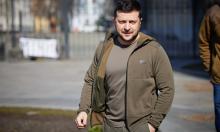Military Toxicologists Guilty of Death Toll
The world wants to know why 117 hostages died as a result of the operation
Doctor Viktor Fominykh from the medical center of the presidential administration stated that poisonous substances were not used during the siege of the music theatre in Moscow. As Fominykh said, “the gas that was used during the special operation was a substance with a narcotic effect, which is generally used for surgery.” In this connection, according to Viktor Fominykh, the doctors and the rescuers who evacuated the hostages had a traditional range of substances at their disposal. These substances are referred to the so-called category of non-specific substances. They allow one retrieve the normal functions of a human organism without known the reason why the functions stopped.
Several foreign media outlets reported earlier that poisonous military gas might be used during the siege. A former hostage named Veselin Nedkov (Bulgarian national) affirmed that the Russian special group used sarin gas. The twenty-eight-year-old Bulgarian man said that it was the first thing that he heard doctors talking about when he recovered in a hospital: “I do not know, if it is true or not, but I heard this,” the young man said.
The Western media pointed out the unwillingness of the Russian government to release the name of the gas. The Daily Telegraph of Great Britain wrote with reference to a London military expert that it was probably BZ gas. This gas was first used by the American military in Vietnam.
Russian experts also believe that it was BZ gas. Doctor of Chemical Science Lev Fyodorov, said: “There can be no other variant. Our special forces have only this kind of gas. Theoretically, it is not a lethal gas if it affects healthy people. However, there were elderly people, children with weak organisms, and asthma-sick individuals among the hostages. This gas was lethal for them.”
In 1925, the Soviet Union signed the convention on the prohibition of the use of chemical and biological weapons. Nevertheless, the Soviet special services started developing these weapons the same year. BZ gas was on the list of substances the were not banned by the convention. That is why it has always been added to the arsenal of the Russian army.
The gas was developed by a special secret institute. The work started in the 1970s in the city of Leningrad (currently St. Petersburg). The institute developed the chemicals to be used to affect the human mind.
Lev Fyodorov said that the institute developed weapons of mass destruction. “The use of this gas makes a human being become unconscious. A person stays alive, but his brain "dies” for 24 hours maximum. They have been practicing the use of this weapon for years. They were supposed to invent a generator that would emit the gas into the atmosphere and spread it,” said Fyodorov.
The first tests with the use of BZ gas took place in Moscow in the 1980s. Harmless bacteria were spread in the Moscow metro with the help of underground vents. “I am afraid that the hostages’ death will remain on the conscience of military toxicologists. They failed to develop a correct plan to storm the building. Before evacuating the hostages, the rescuers should have given them antidote injections,” Lev Fyodorov said.
The gas was used during a siege for the first time. However, experts of the Swedish newspaper Le Temps deny the supposition of the use of BZ gas in Moscow. The newspaper wrote that this gas does not paralyze people, but it causes strange behavior, which was absolutely out of the question in a mined building. According to a Swedish expert, a medical gas was used during the siege of the music theatre. The large number of victims, as the newspaper believes, was caused by an inappropriate overdose.
The Russian press wrote that the Federal Security Bureau refused to comment on the nature of the gas used. The Kommersant newspaper concluded that the information was top secret. It was only written that the gas was not in the arsenal of the Alpha group, which actually stormed the building. Most likely, the Alpha group was given the gas prior to the siege. It is not ruled out that the Alpha men did not know about the consequences that the gas might cause.
A soldier from a special unit said: “Using any novelties is out of the question for operations of that level. I think that those news stories that report that the special services used too much gas are ridiculous. First of all, the substance was developed by a secret KGB lab. Their chemicals are considered to be the most modern in the world. Secondly, a decision to use such a substance is always made on the top level. This requires coordination with specialists, and dozens of signatures have to be collected. Believe me, it is all very serious, and one should not have a superficial approach to it. We are not kamikazes. We used as much gas as was needed. The instructions allowed the norm. We could have even added a bit more in order to make sure that the terrorists were not able to shoot at all. When a special unit conducts a special operation to release hostages, they all have one and only goal: to cause as little harm as possible or to cause no harm at all. The gas that was used by Alpha has been tested many times. Foreign special groups have this gas as well,” a special unit soldier said.
“Russia is trying to avoid a scandal around the poisoning of the hostages.” This is what the Guardian wrote. According to the British newspaper, the government claimed that they had to use gas, because they had no other chemicals at their disposal. The Guardian wrote that it is too early to talk about the public’s reaction to the government’s decision to use the gas and to the hard-heartedness of the authorities towards the hostages’ relatives after the siege.
The Italian newspaper La Stampa published the chronological order of the events in Moscow. Pursuant to the information of the newspaper, the special group started using the gas at about 6:15 a.m. Alpha group entered the building 15 minutes later. Therefore, the effect lasted for 15 minutes. Later, it became known that the gas was in effect only in the central hall of the building. A lot of people in that hall died, including female suicide terrorists. Others died before they were taken out of the building. La Stampa wrote that the authorities knew that hundreds of people would die in the long run. There was no opportunity to make antidote injections to 700 people in a row.
PRAVDA.Ru
Translated by Dmitry Sudakov
Subscribe to Pravda.Ru Telegram channel, Facebook, RSS!




